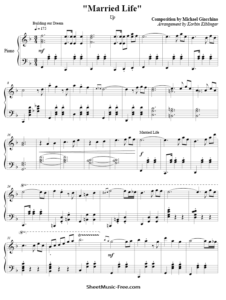Piano Translation and Piano Transcription
Piano translation and piano transcription are two types of musical notation. They are often used interchangeably, but there is a notable difference. The former is a simplified form of musical notation, while the latter is a complex form of notation that may involve many different types of symbols.
In music, a transcription is a faithful adaptation of a piece of original music. A transcription of a piano piece translates the melody and accompanies it with a bass line and some chords. It is also known as a piano reduction, which allows a player to perform the song without an orchestra. Some orchestral pieces have been transcribed for a solo instrument, ensemble or concert band.

Transcriptions have been done for practical and contextual reasons. For example, there are numerous piano pieces that are also found in the orchestral repertoire. One such piece is the Grosse Fuge by Beethoven, arranged for a piano duet. Another example is the “Rite of Spring” by Stravinsky, transcribed for a four-hand piano.
What is Difference Between Piano Translation and Piano Transcription?
The most obvious advantage of a transcription is that it allows for a recomposition of the original sounds. This can be accomplished by recording a performance and writing down the notes. Often, this can be a video game soundtrack or a jazz improvisation. There are even musicians who play such arrangements in cafes.
A more technical version of the above described process is called pitch detection. Pitch detection uses a mathematically related set of frequencies to determine the notes in a tune. When the frequency is near the required harmonic match, the notes are said to “fuse” together. Similarly, when a set of notes are a mathematical multiple of the fundamental frequency, it is said to have the fusion of the three g’s.
Another example of a technologically advanced form of transcription is the Piszczalski method, which is based on a human hearing model. According to this model, each note is segmented and identified by its beginning and ending points. These segments are then mapped into familiar music notation terms. Typically, the piano sheet music part is an interconnected series of these parts.
Several famous composers have transcribed their own works for other instruments. Franz Liszt arranged several of Beethoven’s works, including the Third and Sixth Symphonies. He also transcribed some of Mozart’s more popular operas for a small wind ensemble. Similarly, Webern transcribed a six-part ricercar from Bach’s The Musical Offering.
There are a number of other examples, but it is difficult to discuss them all. Most noteworthy is that of the piano, which has become an important and popular instrument in the recent past. As such, a large literature has sprung up for arrangements of orchestral works and chamber music. Many of the more interesting oeuvres have been transcribed for the piano.
Although the piano is a wonderful instrument, it has limited pitch range and thus requires a more complex notation to convey its musical messages. To illustrate this, some pianists prefer to use the mental flip strategy. By doing so, they can read the melody, the bass line and the chords all at the same time.